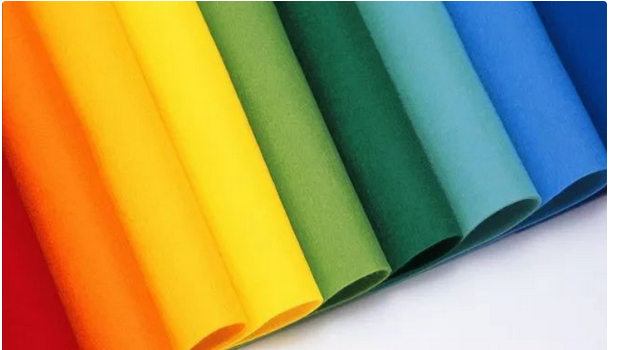Yarn is a general term for yarn and thread. In clothing materials science, yarn refers to many short fibers or filaments arranged in an approximately parallel state, and rotated and twisted along the axis to form a thin fiber with a certain strength and linear density. A long object; and a thread refers to a strand made of two or more single yarns twisted together.
A thin and soft continuous strip made of textile fibers with a certain thickness and physical and mechanical properties. Including yarn, thread and filament, etc. Such as: sewing thread, knitting thread, embroidery thread, etc.
There are many types of yarn, and yarns can be classified according to different starting points.

Classification of yarn: Due to different fiber raw materials and processing methods that make up the yarn, the shape and performance of the yarn are also different. It can be a pure spun yarn made of natural fibers or various chemical short fibers, a blended yarn made of several fibers, or a filament yarn made of direct spinning of chemical fibers. . Generally, yarns can be classified according to the raw materials used, yarn thickness, spinning method, spinning system, yarn knot structure and yarn usage.
Due to the different fibers and processing methods that make up the yarn, there are many types of yarns with different shapes. There are also many classification methods.
(1) According to the raw materials of yarn
1. Pure spinning yarn
It is composed of a kind of fiber raw material, such as: pure cotton yarn, pure wool, pure silk, pure linen , pure fiber yarn.
2. Cotton and linen blended yarn
A yarn spun by mixing two or more fibers. Such as polyester cotton, polyester linen, wool viscose yarn.
(2) Classification according to the fiber state in the yarn
1. Short fiber yarn:
A yarn twisted from short fibers. Usually 15 to 100 short fibers are twisted to form a single yarn, and 2 or more single yarns are combined and twisted to form a thread.
Short yarns generally have a loose structure and a plump feel. Most sewing threads, Korean knitting yarns and woolen yarns are short fibers.
2. Filament yarn
Yarns processed from filaments spun directly from polymer solution are divided into three types according to their structure: monofilament, multifilament, and composite twisted yarn. Monofilament is composed of one long filament and is used to weave socks, pantyhose, headscarves, swimwear, etc.; multifilament is composed of several monofilaments. There are many silk fabrics made of multifilament, such as plain satin, etc., which are used for suits. Linings, underwear, etc.; composite twisted yarn is made of multifilament yarns that are twisted, and different twists are used according to the purpose to weave crepe fabrics.
Filament yarn has good strength and uniformity, can be made into very fine yarn, has poor hygroscopicity, is prone to static electricity, and feels smooth, flat and cool.
3. Reeling (Sao) silk: raw silk reeled from silkworm cocoon.
4. Split film yarn: Polypropylene film sheet is split into the required width through cutting or scribing techniques, and then stretched to make split film yarn, which is used as the base fabric of carpets, fleece fabrics, and woven packaging bags. .
(3) According to the dyeing, finishing and post-processing of the yarn
1. Mercerized yarn: Cotton yarn is treated with sodium hydroxide and tensioned to change the gloss intensity of the yarn.
2. Singing yarn: Use burning gas or electric heat to burn off the hair on the surface of the yarn to make the yarn smoother.
3. Natural color yarn: Original color yarn, which maintains the original color of the fiber without bleaching.
4. Dyeing yarn: The original color yarn is boiled and dyed to make colored yarn.
5. Bleached yarn: Yarn made from original color yarn after scouring and bleaching.
(4) According to spinning technology
1. Combed cotton yarn and carded cotton yarn
Combed cotton yarn refers to cotton fibers that have been combed on the basis of ordinary carding in the spinning system. Cotton yarn.
Due to the removal of short fibers and impurities and repeated carding, the fibers in the yarn are parallel and straight, the sliver is even and smooth, and its appearance and performance are better than carded cotton yarn. It is used to spin high-grade poplin, undershirts, etc.
2. Combed wool yarn and carded wool yarn
The fiber used in combed wool yarn is made of finer, longer and uniform high-quality wool as raw material, and is made according to the combed wool spinning process. The fibers in the strip are parallel and straight, and the strip is even and smooth. It is used for worsted woolen fabrics such as gabardine, Validin, and Palis.
Carded wool yarn is processed into wool yarn using a woolen wool spinning system with shorter processing steps. The fiber length is uneven, the fiber is not straight enough, the structure is loose, and the surface is hairy. It is used for coats, flannel and carpets. .
The structure and properties of the yarn directly affect the properties of the fabric and the wearing performance of the garment, such as the surface gloss, smoothness, roughness or fleece of the fabric, the weight of the fabric, and the texture of the fabric (fullness, softness, crispness, elasticity) etc.), clothing wear resistance, fluffing and pilling properties, etc.








